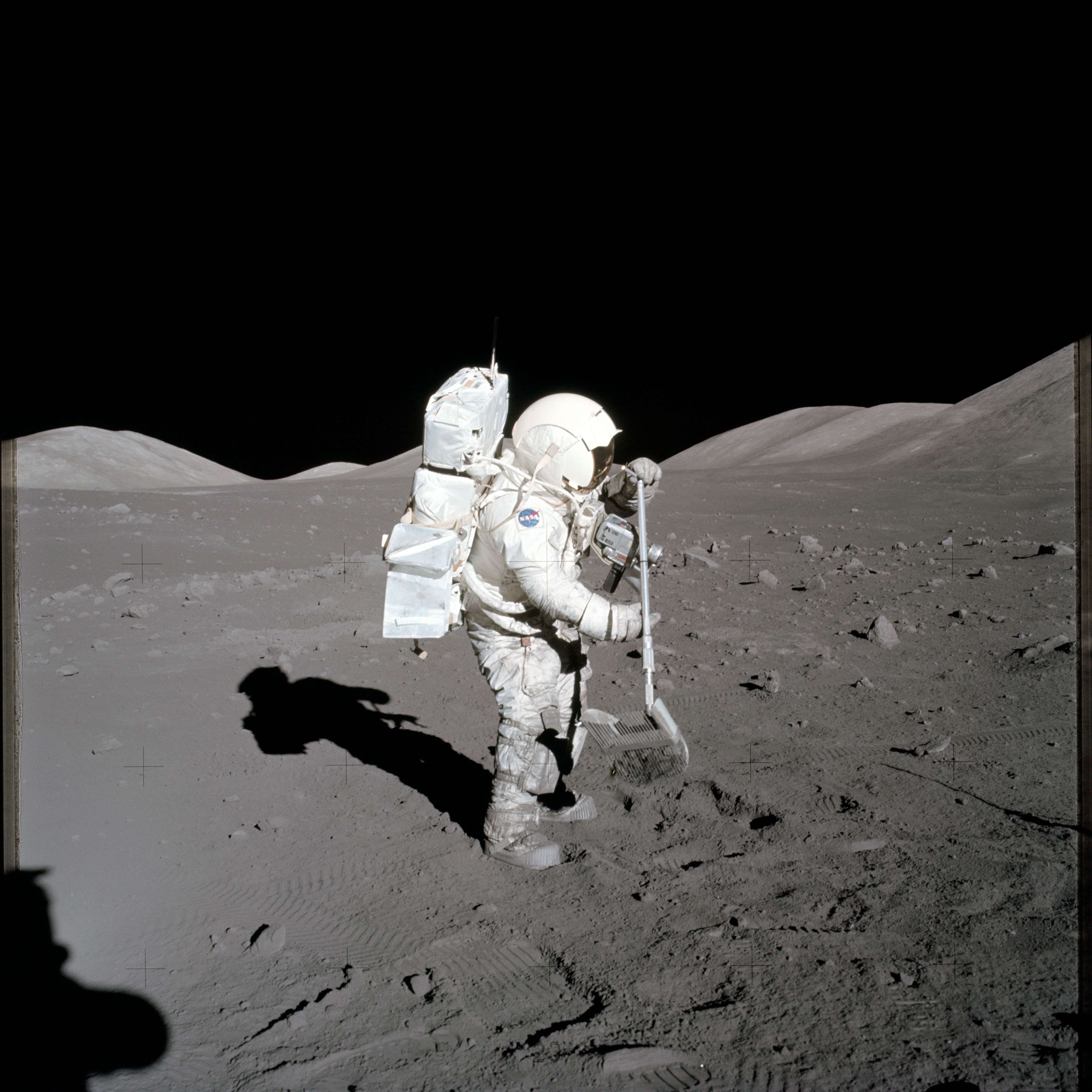Apollo 17 Scientist-Astronaut Harrison H. Schmitt Collecting Lunar Rake Samples
12/1972
Add to Favorites:
Add all page(s) of this document to activity:

The use of lunar roving vehicles (LRVs) during Apollo 15, 16, and 17 greatly expanded astronauts' range of exploration and made many of the major scientific discoveries that resulted from each mission possible. In addition to enabling astronauts to travel farther, LRVs could carry more equipment, like the lunar rake. Astronauts would drag the rake through the Moon’s soil, then shake it to dislodge smaller particles from samples to be kept for return to Earth.
The original description for this photograph reads: Scientist-astronaut Harrison H. Schmitt, lunar module pilot, collects lunar rake samples at Station 1 during the first Apollo 17 Extravehicular Activity (EVA-1) at the Taurus-Littrow landing site. This picture was taken by astronaut Eugene Cernan, commander. The lunar rake, an Apollo lunar geology hand tool, is used to collect discrete samples of rocks and rock chips ranging in size from one-half inch (1.3 centimeter) to one inch (2.5 centimeter).
The original description for this photograph reads: Scientist-astronaut Harrison H. Schmitt, lunar module pilot, collects lunar rake samples at Station 1 during the first Apollo 17 Extravehicular Activity (EVA-1) at the Taurus-Littrow landing site. This picture was taken by astronaut Eugene Cernan, commander. The lunar rake, an Apollo lunar geology hand tool, is used to collect discrete samples of rocks and rock chips ranging in size from one-half inch (1.3 centimeter) to one inch (2.5 centimeter).
This primary source comes from the Records of the National Aeronautics and Space Administration.
National Archives Identifier: 16719300
Full Citation: Photograph 255-AMP-AS17-134-20425; Apollo 17 Mission image - Station1, Panoramic, Sample 1500, 1535-606; 12/1972; Apollo 17 - AS17-0447 through AS17M-0545; Photographs of the Apollo Space Program, 11/9/1967 - 12/19/1972; Records of the National Aeronautics and Space Administration, Record Group 255; National Archives at College Park, College Park, MD. [Online Version, https://www.docsteach.org/documents/document/apollo-17-lunar-rake, April 18, 2024]Rights: Public Domain, Free of Known Copyright Restrictions. Learn more on our privacy and legal page.



